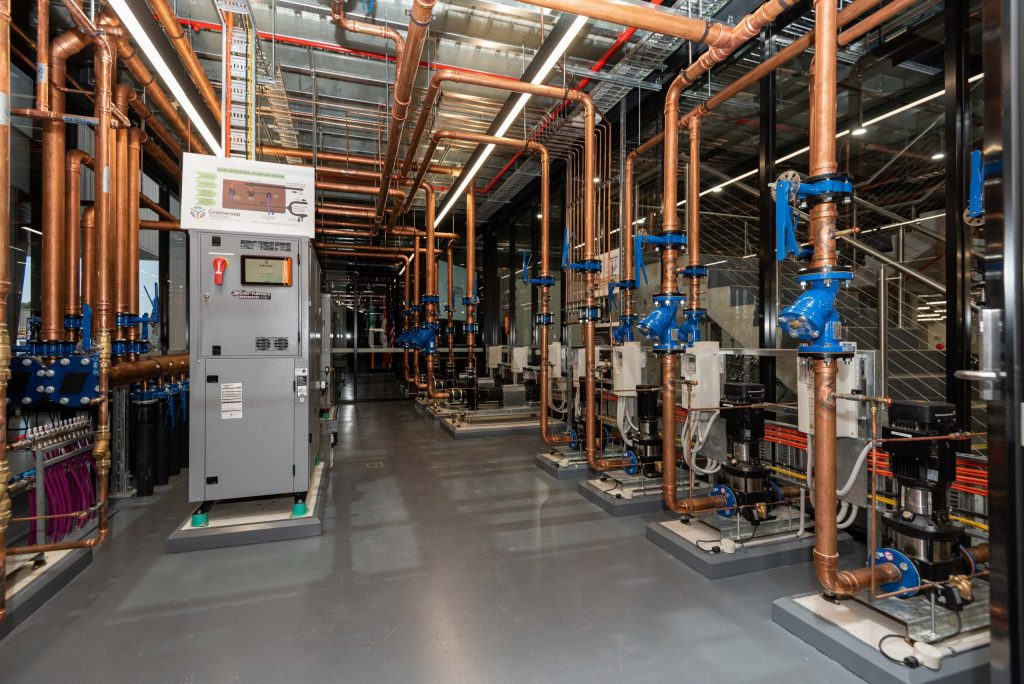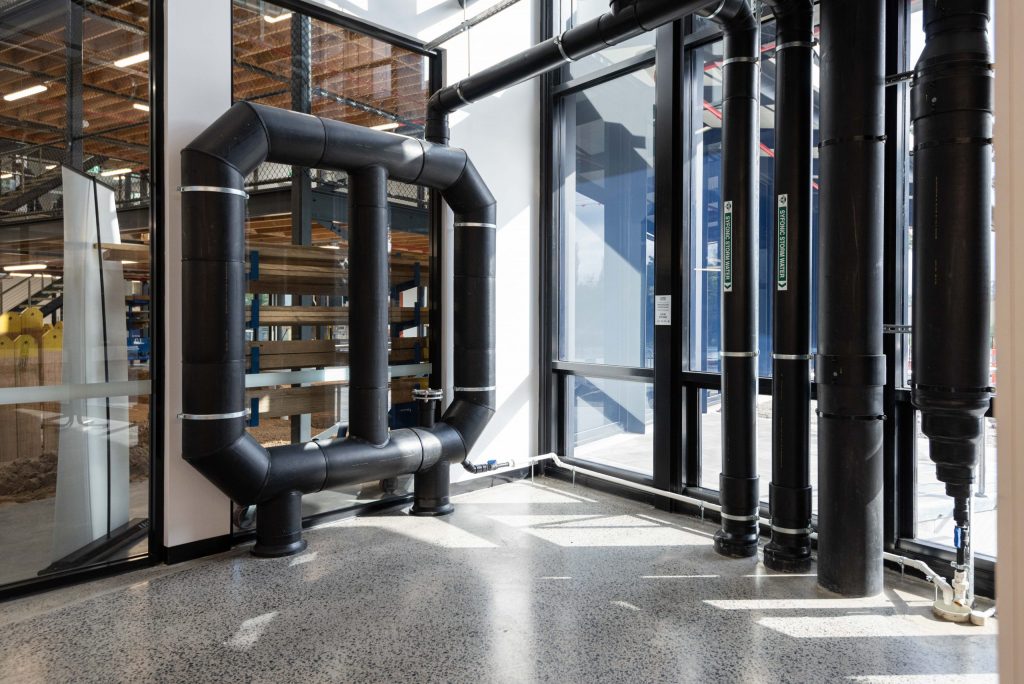21 December 2020
The Plumbing Industry Climate Action Centre (PICAC) was formed in 2009 at the height of the millennium drought, its primary purpose to provide courses in green plumbing, and address skills shortages in sustainable plumbing at the time.
An industry-led training organisation, PICAC represents a unique partnership between the Plumbing and Pipe Trades Employees Union (PPTEU), Master Plumbers and Mechanical Services Association of Australia (MPMSAA), National Fire Industry Association of Australia (NFIA) and the Air Conditioning and Mechanical Contractors Association (AMCA).
In the decade since it was formed, PICAC has grown to six campuses nationally – three in Victoria, two in Queensland and one in New South Wales. PICAC’s focus has also expanded to now offer courses that support the entire career life-cycle of plumbing – from pre-apprenticeship and apprenticeship training through to advanced and specialist post-apprenticeship courses.
But with capacity being reached at its Brunswick campus – and the Geelong campus located to service the west of the state – PICAC sought to add a third campus in Victoria.
A site in Melbourne’s south-eastern suburbs growth corridor was identified as an ideal location for the campus, allowing for a purpose-designed facility to be built.
According to PICAC CEO Shayne La Combre, the purpose of the new PICAC Narre Warren campus is threefold. “We wanted to showcase the latest in plumbing technology – both in the building design itself and through the creation of education spaces,” he says.
“This in turn allows us to deliver training across a wide range of courses across the plumbing life-cycle.
“And by partnering with the International Association of Plumbing and Mechanical Officials (IAPMO) and setting up testing and research facilities on the campus, we are constantly striving to be at the emerging end of plumbing and areas affecting the future direction of the industry. This ensures our training delivery is comprehensively equipping our industry participants for future careers.”
Triple Threat
Having collaborated together on other capital works projects – including PICAC’s first training facility in Brunswick – the PICAC board and NDY’s Professor Tony Arnel share a passion for sustainable buildings.
So when NDY was asked to propose various options for a sustainability-led project at PICAC’s new Narre Warren campus, it included an examination of worldwide trends.
“PICAC wanted to establish a vision for the project that embodied innovation and sustainability, and made a major contribution to industry and the broader community,” says NDY’s Mark McKenna.
After many workshops and detailed conversations, PICAC adopted NDY’s recommendation of a net zero energy (NZE) target for the project – meaning the building would produce all the renewable energy it needed for use, measured over a 12-month period.
“The PICAC board and chief executive required a leading-edge sustainable building that was living testimony to the advanced training that they do,” says McKenna.
“In addition, the technology used to achieve the NZE outcome would intrinsically be part of the upskilling of the plumbing industry, with new and advanced equipment.”
The renewable energy supply design presented a unique challenge requiring creative input from NDY engineers based on their own sophisticated modelling.
Ultimately a combination of three energy sources were chosen to deliver the NZE outcome – thermal energy from geothermal, electricity from an onsite solar PV array, and thermal energy from solar thermal technology.
The groundbreaking design was supported by substantial grants from the Victorian state government and the Australian Renewable Energy Agency (ARENA). These recognised the ambition of the project and its ability to demonstrate technology advances for the benefit of industry.

Simulating Performance
NDY undertook extensive building performance simulation modelling to predict the energy demand of the building utilising different servicing approaches, and to assess the energy generation potential of the rooftop solar PV array.
Design adjustments were made progressively to arrive at an overall design that achieved equality of building energy demand and renewable energy supply, and at acceptable cost.
“While modelling was important to help guide and validate the design, careful consideration of the design requirements and the appropriate servicing strategies to minimise the energy demand were central to achieving the outcome,” says NDY’s Richard Jelbert.
He says the adoption of indirect evaporative coolers (IECs) as a low-energy means of providing adequate cooling to the training and workshop areas were a key part of this, including the client’s recognition that full air conditioning in these areas was not an appropriate basis for design – hence relaxed temperature control ranges were able to be applied.
“Minimising the building energy demand through critical examination of the building’s requirements and matching the most suitable low-energy systems to these requirements,” Jelbert says, “was just as important as the modelling process itself.”

A Cool Design
“The early phases of the project were based around the use of a large solar PV array to take advantage of the significant roof area available, coupled with IECs for the majority of the HVAC system,” says NDY’s Rafe McAuliffe.
“The IECs were selected for their very low electrical power when cooling, which was a key requirement to limit the size of the PV array. While IECs have limitations due to their reliance on external humidity, the wider internal temperature band that was adopted for the workshop and training facilities was a great match.”
The IECs at PICAC Narre Warren operate as 100 per cent outside air systems, and do not provide heating, so an alternative heating approach was needed. This was to be achieved by combining FCUs in parallel with the IECs, connected to a central heating hot water (HHW) system – initially provided by conventional condensing boilers.
But as the design for the campus progressed, the need to remove all fossil fuel usage from the site was identified.
To achieve this, the boilers were replaced with two ground-source heat pumps (GSHPs) to generate heating hot water. The central GSHPs were therefore able to be used in a conventional manner, to supply slab heating and heating to the HHW coils
Showcasing Geothermal
A major contributor to the building’s NZE ambitions is the incorporation of a ground-source heat pump (GSHP) system to heat the insulated ground slab.
The building is founded on over 500 steel screw piles – 200 of which were adapted for the GSHP system that is comprised of some 12km of pipework.
The key factor lending itself to the application of a GSHP system was the intended design of the PICAC Narre Warren building – that is, low-rise with a large footprint relative to the total building area. This resulted in a relatively low heating demand per unit area for the site, meaning that it was possible to design a GSHP system to meet 100 per cent of the demand.
“Multi-storey buildings generally struggle to demonstrate viability for ground-source systems owing to the larger resulting heat demand spread over a limited site area,” says Jelbert.
The site geology at Narre Warren was also favourable, and gave rise to good heat-transfer properties that meant the design of the system to achieve 100 per cent of demand was feasible.”
The GSHP system comprises three main stages – the ground-source heat exchanger (bore field), the heat pumps and the building’s heating water system.
The ground-source heat exchanger comprises a total of 28 boreholes and 192 energy piles that are interconnected and connected to the source side of the heat pump.
The water circulating through this heat exchanger enters at approximately 6°C, and collects heat from the ground such that it is heated to approximately 10°C. It then enters the heat pump, where heat is extracted from the water and the temperature on the building side is elevated to about 45°C.
“The building’s heating water system, connected to the demand side of the heat pump, provides this heated water to many of the heating loads in the building,” says NDY’s Jelbert. “For spaces served by the IECs, including the training and workshop areas and some tutorial rooms, the heating is provided via either FCUs ducted in parallel or duct-mounted HHW coils.”
The training and workshop areas, as well as main entry, are also provided with in-slab heating coils due to the high-volume space.
The bore field also functions as a condenser water heat rejection sink in summer and a heat injection source in winter to provide cooling or heating energy for the building’s water-source packaged air conditioning units.
Serving the office areas and lecture theatre, these are designed to suit the wide temperature range of the ground-source loop.
Jelbert says the GSHP system does not completely eliminate the need for conventional HVAC systems. For example, the airside systems are recognisable as conventional HVAC systems, but the typical boiler and chiller arrangements (with which the building was originally designed) are removed.
“The use of the IECs in parallel with FCUs,” Jelbert explains, “is an unconventional application of familiar technologies, adopted to minimise the heating and fan energy of the system in heating mode.”
Expanding Solar
The rooftop solar PV array at PICAC Narre Warren has a rated output of 281kWe and an estimated annual energy generation of 384,000kWh (AC).
Jelbert says that for the building to achieve its NZE target certification, the solar PV system was required to deliver at least 375,000kWh (AC) annually.
“In the event that the building used more energy than predicted, or its operation changes over time to use more energy,” he says, “there is a provision for 10 per cent increase in solar PV generation capacity within the site infrastructure to accommodate system expansion.”
This additional solar PV capacity can be installed over the campus’s carpark areas.
Living Laboratory
La Combre says creating a sense of collaboration among all those who would work on the PICAC Narre Warren project was critical to the project’s success.
“Many of the ideas to better showcase the essential elements of the building came from the trades working on the site,” he says.
“You will find many simple cut-aways throughout the building that give students and visitors a deep insight into the features that make up the many hydraulic and mechanical system components that would normally be hidden away.”
Many of these exposed building services are also introduced within specific units of the apprenticeship curriculum.
For instance, when visitors attend the Narre Warren campus, one of the first things they see are display cases in the floor that show how the hydronic floor heating is laid.
“Then they look up and see the geothermal plant room encased in glass, so they can directly learn how that works too,” says La Combre.
Even the solar PV array and bulk hot water plant on the rooftop are on display.
“It was a legacy project for the future development of the industry,” La Combre says. “Everyone who worked onsite took great pride in knowing that their work was not only important to the quality of the construction, but would also be used as an active part of training for generations to come.”
Achieving Net Zero
PICAC’s new Narre Warren campus was completed in late 2019.
Although training had been intended to commence at the facility from February 2020, onsite activity was impacted due to the COVID-19 pandemic, with some first-year apprentice training conducted later in the year as restrictions eased.
Despite not operating as envisaged, the facility was actively tracked during 2020 as part of the ongoing building tuning process.
According to Jelbert, the initial indications are encouraging with the building having maintained a net-negative energy position (in other words, having generated more energy than it used) over the winter months when energy production was at its minimum.
“We are optimistic that with the time available to tune and optimise the building while its energy demand is relatively low, it will be in the best possible position to deliver its net zero energy target when full operation becomes possible again,” Jelbert says.
NDY has conducted final modelling based on the as-built information to allow monthly benchmarks to be set for all energy sub-meters in the building.
This information is now being used as a central part of the building tuning process.
PICAC was awarded the 2020 AIRAH Excellence in Sustainability Award. You can read more about the awards here.
This article was originally published in the Summer 2020-21 edition of Equilibrium. You can view it in its original format here.
Lessons from the Geothermal Field
NDY’s Richard Jelbert hopes this project will prove that ground-source systems are practical and viable in Victoria and elsewhere in Australia, and that they can deliver real benefits whether or not a project is setting targets as high as those set by PICAC.
“With the transition away from fossil fuels already commenced and only set to gather momentum in the coming years, the use of ground-source systems provides a great alternative that can already provide carbon-equivalent, or better, performance than conventional gas-fired heating systems,” Jelbert says.
“This will only improve as the carbon intensity of grid electricity falls over time.”
Additionally, he says commercial buildings do not need to suffer any penalty to their NABERS Energy ratings by adopting ground-source alternatives.
“There are, of course, constraints – primarily in the achievable capacity from the ground on any given site, which means that such a system cannot necessarily provide 100 per cent capacity. But a hybrid system of ground and air-source technologies is viable.”
Jelbert says one of the key lessons from the PICAC Narre Warren projects is that ground-source is suitable for both heating and cooling provision, and provides an economy of cost that is not possible with many other system types.
NZE Accreditation
Professor Tony Arnel specialises in sustainable buildings and energy policy at Deakin University. For the purpose of NZE accreditation, he proposed that Deakin be engaged as the independent verifier for the project.
The verification process is based on the methodology of the National Renewable Energy Laboratory (NREL) based in New York.
Arnel has collaborated with Dr Hong Xian Li from the School of Architecture to complete the substantial work required to thoroughly commission and fine-tune the extensive array of metering and sub-metering needed to provide the energy performance data.
“During the first part of 2020, the data analysis focused on both the energy consumption and energy generation to validate data, analyse performance and provide diagnostic recommendations to improve results,” says Arnel, who also serves as NDY’s director of sustainability.
“As at the end of September 2020, the building was generating more energy than it is consuming, and is predicted to achieve NZE accreditation on schedule in June 2021.”
Energy Piles
The ground-source heat exchanger’s flow and return water pipelines have been incorporated into the 13m-deep steel screw piles of the facility’s structural foundations.
By using these as “energy piles”, significant efficiencies were able to be realised, as well as cost benefits.
“It reduces the number of independent boreholes required to be drilled, and owing to the depth of these boreholes, reduces the time for which deep bore piling rigs are required onsite,” says Jelbert.
“It also reduces the complexity of coordinating multiple piling operations occurring on site, and reduces the installation time for the piles. Cumulatively, these all result in a cost saving for the project.”
According GeoExchange Australia managing director Yale Carden, M.AIRAH, once the ground conditions and piling design were known, the adoption of energy piles became obvious due to a combination of the number of piles, their depth and their spacing.
“However, our modelling indicated there was insufficient capacity from the energy piles alone to provide 100 per cent of the heating and cooling requirements,” he says. “Hence an additional 28 boreholes were also installed in an approximately 50/50 capacity split.”
The use of the energy piles also became integral to the ARENA grant and an Australian Research Council (ARC) monitoring project with the University of Melbourne.
Accommodating IAPMO
According to managing director at IAPMO Oceana, Paul Bonsak, it was a natural step that IAPMO Oceana’s research and product testing laboratory joined PICAC at the state-of-the-art Narre Warren facility.
“Globally, IAPMO is heavily involved in standards development and the Oceana team is no exception,” he says.
“IAPMO Oceana aims to contribute more to both water and gas standards committees to ensure that Australian standards and specifications keep up with the innovation generated by industry. In addition to standards development, the laboratory is constantly assisting clients and manufacturers with new products, technology research as well as compliance.”










